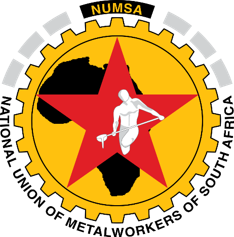By the end of the week late in January 1973 the women textile workers at CWPM in Pinetown had had enough. They were tired of being humiliated by the manger, of having to work in the open, rain or shine, and earning the grand sum of R4.50 a week. They listed their demands for change and went home. By Monday they and tens of thousands of metal, textile, construction, and abattoir workers, the majority of Durban 's workers were out on strike.
Even before this, metal workers in Mobeni metal foundries had responded to student pamphlets arguing that wages were way below the poverty line. They had come out on strike in 1971 and had been fired with the security police standing by. But by 1973 the metal factories were out in force; in Defy, Triang, Dorman Long, Elgin Metal Products, Pinetown Engineering Foundry, Main Tin Manufacturing and National Containers.
Most spectacularly Metal Box workers in Mobeni were out on the streets, calling on other factories to come out and marching in the streets with striking textile workers. For the first time in South Africa , foreign television crews captured the events which made headline TV news internationally.
These were exciting times as workers marched through the centre of Durban shouting slogans and demanding that white workers stand down and join them in the streets. In the industrial areas strikers called out their fellows in factory after factory. Fresh battalions were greeted with cheers.
The 1973 wave of strikes announced to the world that a new period of struggle for industrial and political rights had opened up. Here the workers announced that the banning of black political parties and the repression of trade unions was no longer able to hold the workers back. The struggle for freedom would be based in the workplaces and the townships, a truth which was proved with the 1976 student uprising.
More than that; it was clear that the driving force of the revived resistance was coming from the factories and from the townships. Here the bedrock of Cosatu was being laid in new unions such as Numsa, Sactwu, Satawu, Cwiu (now Ceppwawu), which went through many name changes. But they lasted and even thrived through the terrible times of the 70s and 80s.
In Gauteng the movement in Natal created the atmosphere in which Num spread like wildfire on the mines.
The 1973 movement was launched on demands for higher wages but immediately threw up the demands for freedom and the idea of socialism. Many of the political goals have been reached, but workers still look forward to a society in which there will be jobs, housing, education, and health for all. Although we have our freedom, jobs and a living wage for all is still on the horizon.
Dr David Hemson, trade union leader banned in 1975
Do you know anyone that went on strike in 1973? If you do, ask them to write and tell us their stories.
Source
Numsa News
